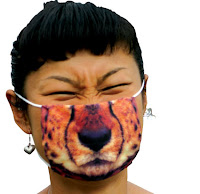築地市場のレッスン
Tsukiji Market
Normally you wouldn’t think of going to a food market as a
destination for your travels when abroad, but when in Tokyo there is one food
market that stands above them all. This market is the Tokyo Metropolitan Central Wholesale Market (東京都中央卸売市場
Tōkyō-to Chūō Oroshiuri Shijō), or as it is more commonly known the Tsukiji Market (築地市場
Tsukiji shijō).Tsukiji is located near the TsukijishijōStation on the Toei Ōedo Line
and Tsukiji Station on the Tokyo Metro Hibiya Line. Tsukiji Market
is the largest fish and seafood markets in the world. They handle more than 400
different kinds of seafood including 300 kg tuna.
Operations
The market is open most mornings (excluding Sundays,
holidays and some Wednesdays) at 3:00am. At this time lots of new seafood in
brought into the market for their auctions. This includes the famous tuna
auctions. The auctions start at 5:20am and are done by 7:00am. At this time the
seafood is handed over to the winners, some destined for restaurants in other
locations while some is destined for local stalls within the greater market. If
you are looking for an interesting time, or some of the freshest seafood then
there is no better place than the Tsukiji Market.
Tuna Auctions
One of the coolest things to witness at the market is the
tuna auctions where different verities of tuna are sold to the highest bidder.
The most famous are the Bluefin tuna prized for their fatty meat and used in
sushi and other applications. Unfortunately due to the popularity of the tuna
auctions they have been forced to implement a restriction to the number of tourists
allowed in to view the auction. The current limit is 140 visitors, so if you
want to get in to see it then make sure to be there early. Otherwise the main
market is not open to the public until 9:00am.
So if you find yourself planning a trip to Japan and you enjoy fresh seafood then take a look at the Tsukiji Market. Who knows you might find something new to try eating. So until next time...
じゃね。

























